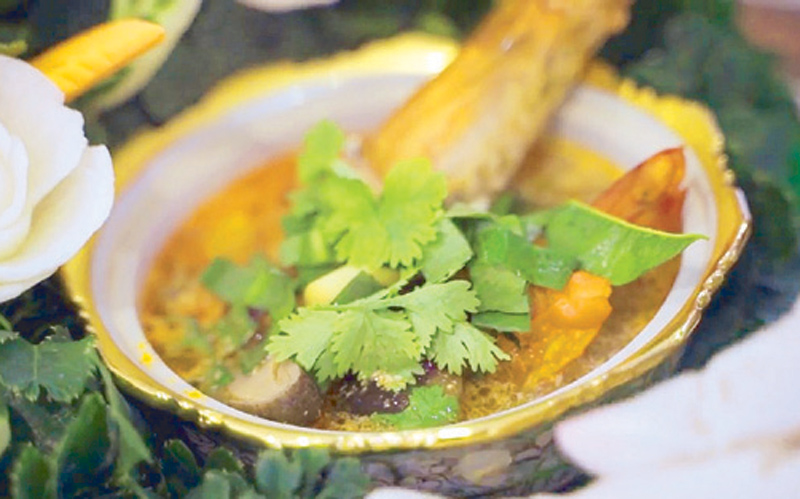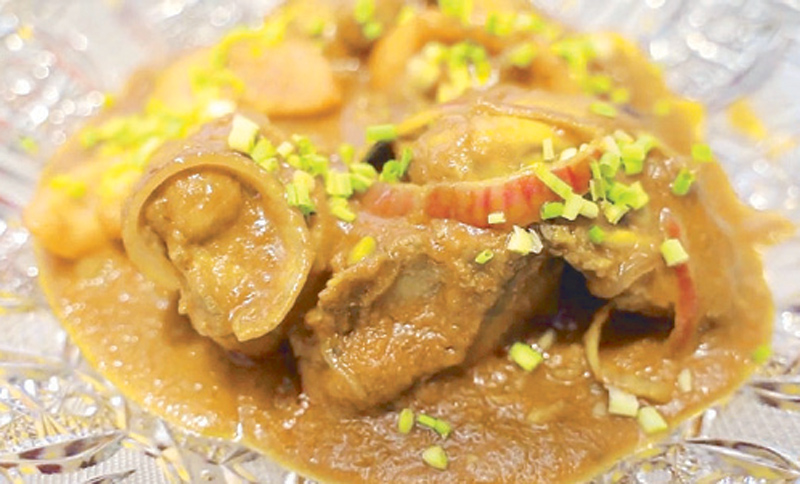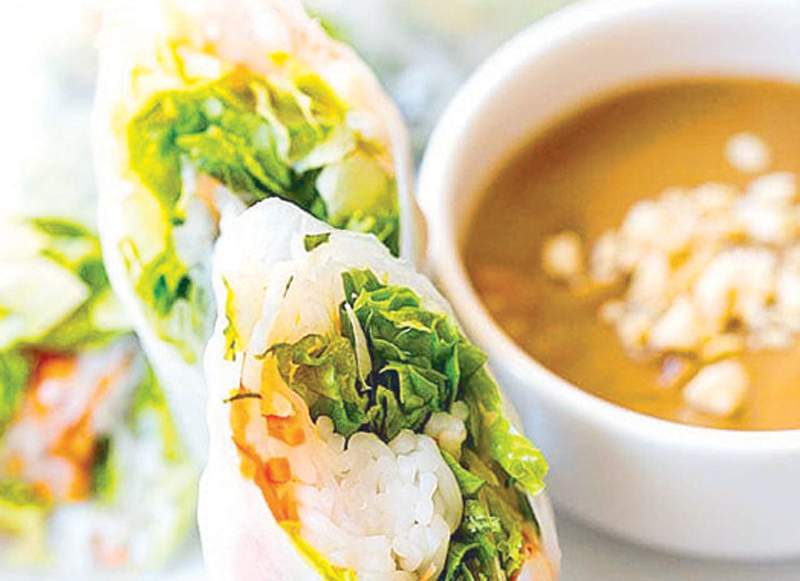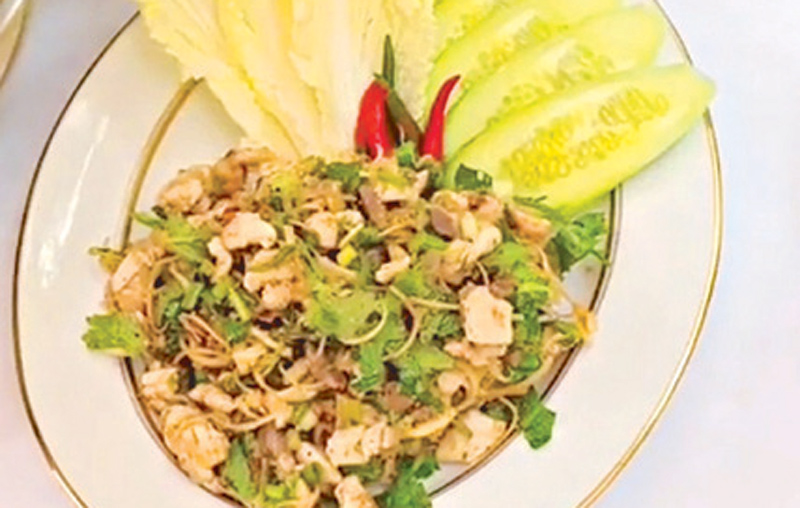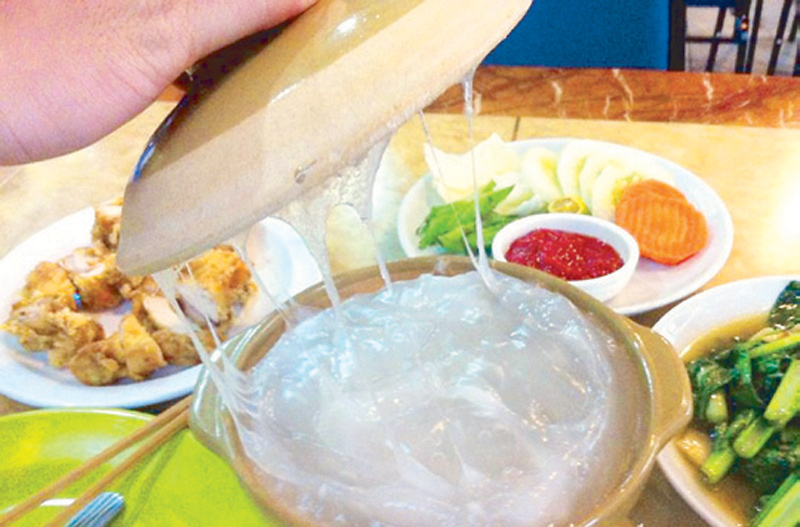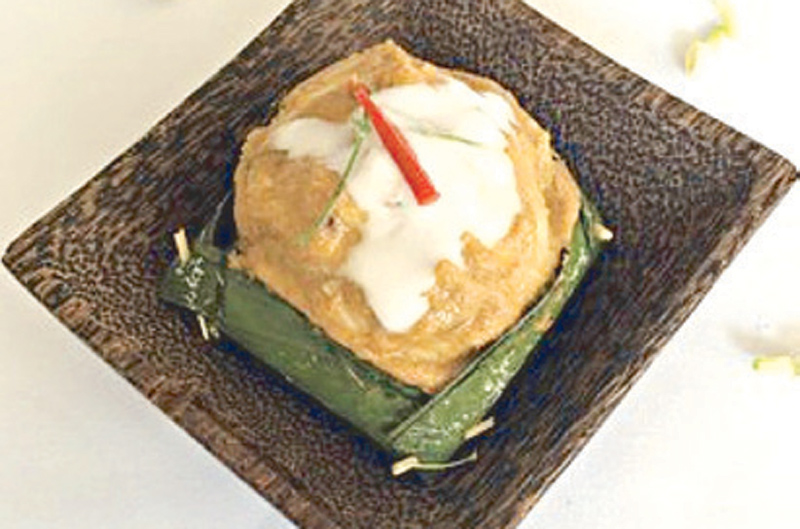A taste of satay, ambuyat, trey amok, ayam masak merah, mohinga, larp, hokkien mee, tom yum, goi cuon & adobo


With strict quarantine measures in Manila, the ASEAN Ladies Foundation (ALF) had to forego their annual cultural festival to celebrate ASEAN Month in August. But that didn’t dampen the feisty ladies’ commitment to keep relations thriving and maintain unity and strength in the region.
And so, amid the pandemic, the ASEAN Ladies thought of an interesting way to highlight and promote their respective countries’ culture and cuisine with a series of cooking videos.

Well, the region has truly become borderless, thanks to the power of connectivity and social media.
“As they say, ‘Stay home, stay safe.’ The COVID-19 pandemic forced all of us to stay indoors,” said Linda Rahmanto, ALF president. “We noticed that a lot of people have become creative and productive in the kitchen. So we thought of creating cooking videos to bring our national dishes into your homes.”

The wife of Widya Rahmanto, Deputy Chief of Mission, Embassy of the Republic of Indonesia, added that the culinary videos are aimed towards attracting more people, not only to understand the process of making these dishes, but also to gain insight into the culture of their neighboring countries.

Exploring ASEAN flavors
With the help of chef Untung Taurut, Rahmanto puts the spotlight on Ayam Bakar Bumbu Rujak (grilled chicken in rujak sauce) and an herbal drink.
“Just like rendang, satay or gado gado, Ayam Bakar Bumbu Rujak is a popular dish in Indonesia,” shared Rahmanto. “Rujak in the Indonesian language means ‘mixture.’”

There are many different types of sauce used for rujak, but since this recipe calls for bumbu rujak, chef Taurut used herbs and spices like kaffir lime leaves, bird’s eye chili, lemongrass, tamarind pulp, galangal and terasi (Indonesian shrimp paste). The mixture is similar to rendang, but less complicated.
“We also take pride in our Jamu Kunyit Asam, a traditional Indonesian herbal drink, which is highly recommended, especially in the time of the pandemic. This drink has turmeric, which helps boost the immune system,” enthused Rahmanto.
Another interesting dish was shared by Noraimi Rosli, wife of Khairul Hazwan Mohd Nor, Second Secretary, Embassy of Brunei Darussalam.
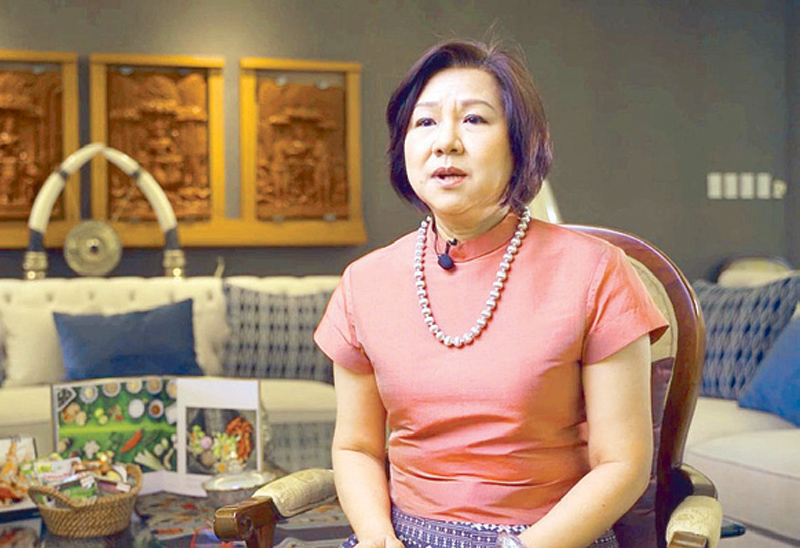
Traditionally eaten on the floor with a bamboo fork called a chandas, Brunei’s national dish Ambuyat is made from ambulong, which is a Bruneian term for sago (tapioca).
“Ambuyat has a unique, starchy, glutinous texture and is normally eaten with cacah (Bruneian side dishes),” shared Rosli.
Choose from any of these cacah: ikan rumahan (fried mackerel with asam jawa (tamarind), belutak (made up of salted minced meat stuffed into casings of cow or buffalo’s small intestines), cacah binjai (made from binjai and sambal), daging kunyit (beef with turmeric), or udang rabus (steamed prawns).
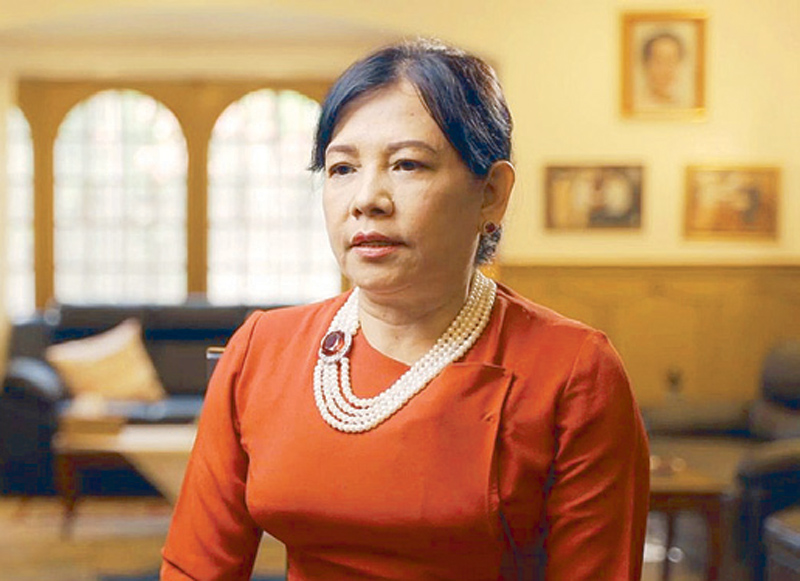
“A bowl of Ambuyat is usually shared among family members, representing the close-knit community we have,” added Roslin.
Due to its gelatinous texture, Ambuyat can also be used as glue for kites and spring rolls.
“Ambuyat is not supposed to be chewed, but swallowed immediately,” noted Roslin.
Maria Lourdes “Louie” B. Locsin, wife of Foreign Affairs Secretary Teodoro Locsin Jr., shared her love for adobo.
“It might seem so common, but for me adobo is one of the most interesting dishes in Philippine cuisine,” she said. “As you visit the different provinces around the Philippines, you’ll find countless twists to adobo. The differences are largely due to the availability of ingredients in a particular region.”

The word “adobo” comes from the Spanish word “adobar,” which means “to marinate.”
“The first time the word ‘adobo’ was used was in the journal of the Franciscan friar Pedro de San Buenaventura, when he talks about adobo de los naturales, or adobo of the natives. And the name stuck,” explained Locsin.
According to Locsin, another fascinating thing about adobo is that with its many variations, you can eat it the entire day.
“You can have adobo flakes for breakfast with fried rice. You can have adobo as a viand for lunch or dinner. There’s also adobo sandwich for merienda,” she enthused. “I remember as a teenager, there was a restaurant in QC that served Adobo Flying Saucer. It’s basically adobo chunks in between bread and grilled like a panini.”
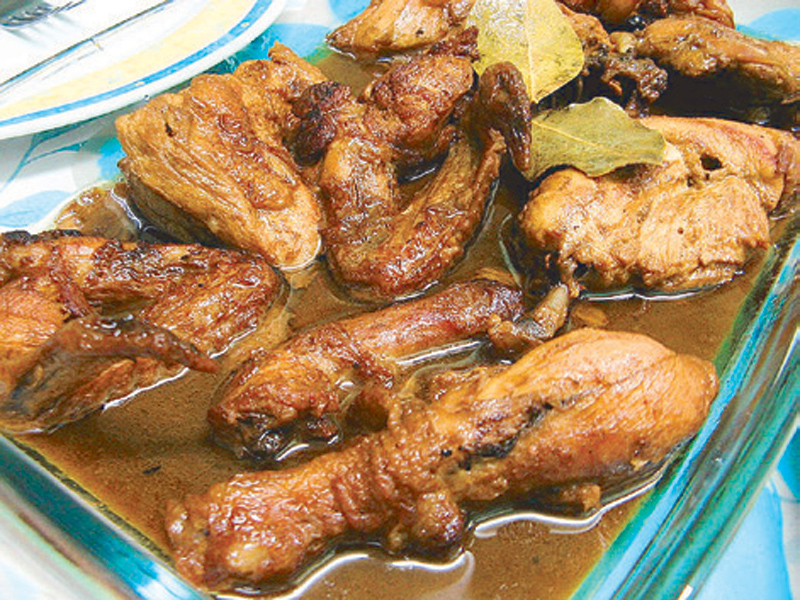
All 10 ASEAN countries were represented in the cooking videos. Other dishes featured were Trey Amok (steamed fish curry) from Cambodia; Ayam Masak Merah (spicy tomato chicken) from Malaysia; Monhinga from Myanmar; Larp/Larb Kai (chicken salad) from Laos; Hokkien Mee from Singapore; Creamy Tom Yum Goong (hot and sour soup) from Thailand; and the all-time favorite, Goi Cuon (fresh spring rolls) from Vietnam. The curated dishes brim with cultural relevance in each country.
“These videos show real home cooking — food we prepare at home and eat with our families,” said Locsin.
Food, indeed, creates a world to share our love, sorrows, dreams and experiences.?
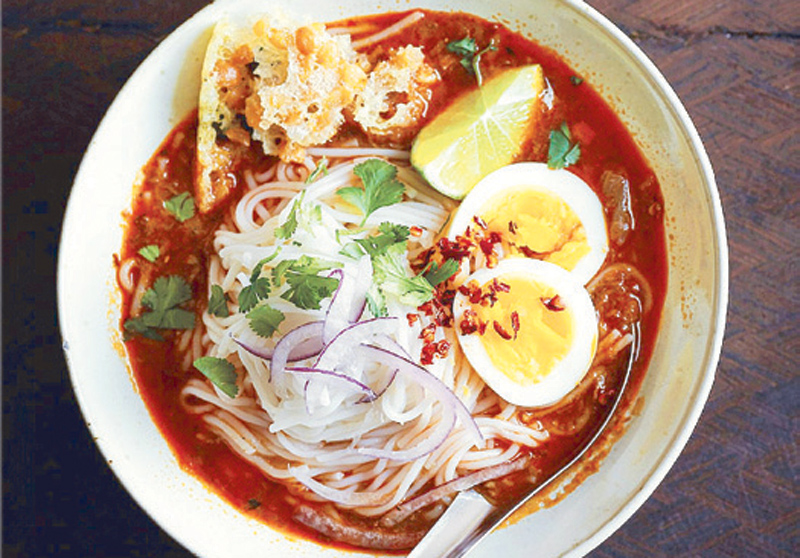
* * *
To get the full recipes, follow the ASEAN Ladies Foundation, Inc. on Facebook and view the respective cooking videos of the member ASEAN countries.
Jamu kunyit asam (turmeric and tamarind herbal drink) of Indonesia
Ingredients:
2 liters drinking water
4 pcs pandan leaves
4 tablespoons fresh turmeric
1/2 cup tamarind pulp
1 cup palm sugar
2 tsp salt
Procedure:
1. Pour water in a large pot.
2. Combine all the ingredients and bring to a boil over low heat.
3. Strain the liquid and discard the solids.
4. Set aside to cool.
*This drink may be served warm or cold.
